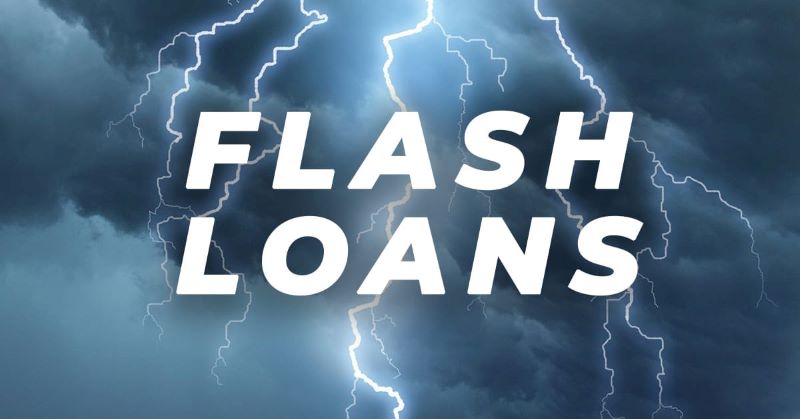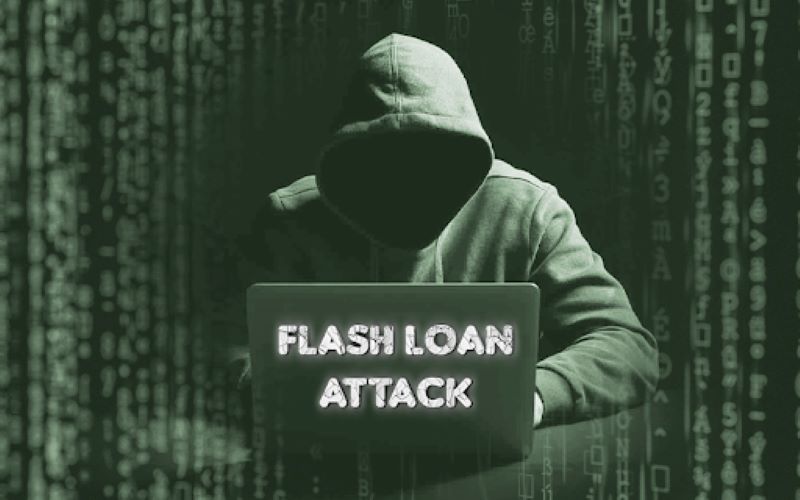Flash Loan has emerged as a revolutionary tool in blockchain finance, transforming the way traders and investors approach their strategies. By allowing users to borrow large amounts of capital without collateral, It enable unprecedented flexibility and innovation in trading strategies. This comprehensive guide explores the rise of Flash Loan, their impact on blockchain finance, and how they are reshaping trading practices in the decentralized finance (DeFi) ecosystem.
What is a Flash Loan?
Flash Loan is a special type of loan in the decentralized finance (DeFi) sector on the blockchain. Unlike traditional loans that require collateral, It allows users to borrow a large amount of money without any collateral. However, there’s a crucial condition: the entire borrowing transaction must be completed within the same block.
The Flash Loan processes typically involves three main steps:
- Borrowing: The user borrows a large sum from it protocols without providing any collateral.
- Executing transactions: The user utilizes the borrowed funds to execute one or more transactions, such as arbitrage trading, providing liquidity, or investing in high-yield opportunities.
- Repaying the loan: The borrowed amount, along with service fees, must be repaid before the transaction block ends. If not repaid on time, the entire transaction is reversed.
Flash Loan has opened up new opportunities for optimizing profits and executing complex financial strategies, while also creating challenges related to risk and security within the DeFi ecosystem.
Applications of Flash Loan in Trading Strategies
It is a powerful tool in the decentralized finance (DeFi) space, allowing for efficient trading strategies without requiring substantial upfront capital.
- Arbitrage: It enables arbitrage strategies, where users exploit price differences between exchanges or different markets. For example, if a cryptocurrency is trading at a lower price on exchange A compared to exchange B, users can borrow funds from a Flash Loan to buy the cryptocurrency on exchange A and sell it at a higher price on exchange B, profiting from the price difference. The entire process of buying, selling, and repaying the loan must be completed within a single block.
- Liquidity Provision: Users can utilize Flash Loan to temporarily provide liquidity to DeFi protocols or decentralized exchanges. For instance, they can borrow funds to provide liquidity to a pool on an exchange, earning rewards from trading fees in the short term, and then repaying the loan. This allows for generating profits from trading fees without needing to have a large amount of capital readily available.
- Debt Restructuring: It can also be used to restructure debt or loans on DeFi platforms. Users can borrow funds to repay high-interest loans, then re-borrow under better terms or migrate their debt from one platform to another with more favorable conditions. This can help optimize financial costs and improve the financial situation.
- Capitalizing on Short-Term Investment Opportunities: With Flash Loan, traders can take advantage of short-term investment opportunities without needing to have significant capital upfront. For example, if there’s a new project or an important event about to happen, investors can borrow funds to participate in the investment opportunity and earn quick profits before repaying the loan.
- Addressing Security and Safety Concerns: Some strategies using it also aim to test and identify security vulnerabilities in DeFi protocols. Developers can conduct simulated attacks to check the security of smart contracts, thereby improving and enhancing the safety of the DeFi ecosystem.
It is a very useful tool in the DeFi environment, opening up many new trading and investment opportunities, but they also come with risks and challenges. Effective use of Flash Loan requires a deep understanding of the market and trading strategies.
Benefits and Risks of Flash Loan
Benefits of Flash Loan
- Capitalize on Quick Investment Opportunities: It allows traders to take advantage of short-term investment opportunities without the need for large amounts of upfront capital. For example, if there is a price discrepancy between exchanges or an attractive investment opportunity, users can borrow funds to execute the trade and earn profits immediately.
- No Collateral Required: One of the significant advantages of Flash Loan is that they do not require users to pledge any collateral upfront. This helps reduce risks and initial capital costs for transactions, as the borrowed funds will be repaid within the same transaction block.
- Enhanced Liquidity: Flash Loan can provide temporary liquidity to DeFi platforms or decentralized exchanges, improving liquidity and the efficiency of transactions in the short term. Users can provide liquidity to pools or protocols and earn rewards from trading fees.
- Support for Complex Trading Strategies: Traders can use it to execute complex trading strategies such as arbitrage, debt restructuring, or investing in new projects without needing substantial upfront capital.
- Security Testing: Flash Loan can be used to test the security of smart contracts and DeFi platforms. Developers can conduct simulated attacks to identify vulnerabilities and improve the overall safety of the ecosystem.
Risks of Flash Loan
- Liquidity Risk: While Flash Loan provide temporary liquidity, if the transaction is not executed correctly or if prices fluctuate significantly, users may face difficulties in repaying the loan. This can lead to failed transactions and loss of fees.
- Technical Risk: It rely on smart contracts and DeFi protocols. If these contracts have bugs or security vulnerabilities, it can result in loss of funds or access to assets.
- Market Risk: Significant price volatility or unforeseen events can impact the ability to execute trades and repay the loan. The cryptocurrency market can experience sudden fluctuations, affecting transaction outcomes.
- Legal Risk: Regulations and laws related to it and DeFi transactions are still evolving. Users may encounter unclear legal or regulatory issues when conducting transactions using Flash Loan.
- Gas Fee Risk: Executing Flash Loan requires gas fees for transactions on the blockchain. If the transaction fails or takes a long time to execute, gas fees can become a significant factor, reducing profits from the trade.
It is a powerful tool in the DeFi space but also come with various risks. Effective use of it requires a deep understanding of trading strategies, DeFi tools, and risk management.
The rise of Flash Loan has significantly transformed trading strategies within blockchain finance, offering unprecedented opportunities for leveraging temporary capital without the need for upfront collateral. As explored, Blockchainbulletinweekly believes, provide remarkable benefits such as immediate liquidity and the ability to execute complex trading strategies, but they also come with inherent risks like market volatility and technical vulnerabilities. As the blockchain industry continues to evolve, the potential for it to drive innovation and efficiency in trading will likely expand.



